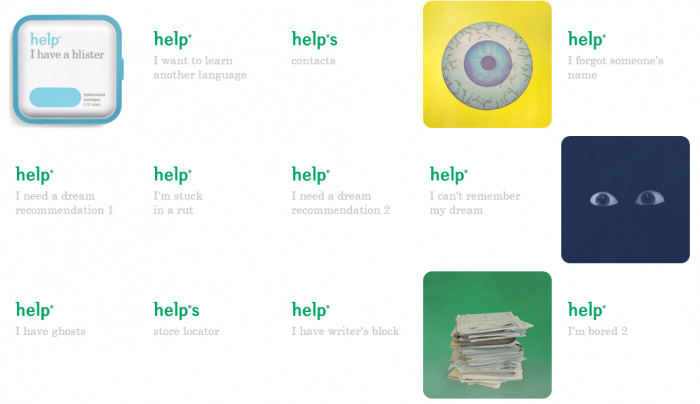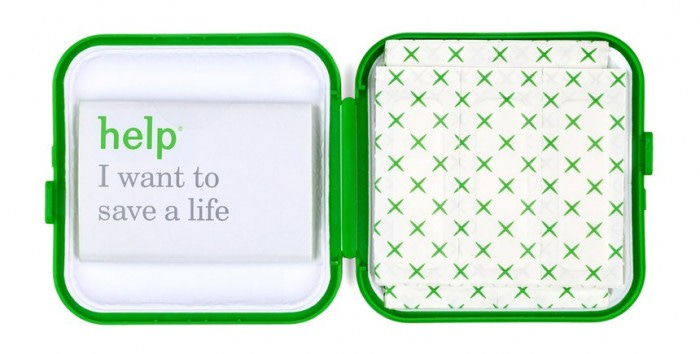Archive: Help. Does their marketing need it?
Working in marketing, I find unique inspiration daily. It seems cliché but it's absolutely true. My Feedly is full of digital, branding and retail design websites and blogs, covering personal and work-related topics. They give me ideas for my own blogs, or serve as links to share online and in the office.
It was through Feedly, several years ago, that I first became aware of 'Help', the American pharmaceutical brand with a difference. Initially it was their packaging designs, via The Dieline, that drew my attention. Quite simple but hugely memorable, especially for what is a traditionally dull industry, these designs stuck in my head.
So memorable, when I went to California in April 2014, I spotted the headache tablets in our hotel's rather different 'minibar', bringing back all of the above memories. This reminded me what can be achieved through the application of consistent design principles with that initial creative spark.
It wasn't until recently though that I finally looked at the Help remedies website, as a result of a discussion at work about great packaging design. What we discovered was a an exceptionally strong website in terms of engagement. A colleague and I then spent longer than two 'mature' adults should do, laughing at some of the brilliant 'activities' on the Help site. Mixed in with the daft advice are the products themselves. Represented by their packaging or, as you can see below, imagery reflective of the product's benefits – wide open eyes for 'Help I can't sleep' and a bloodshot eye for 'Help I have allergies'.
The above is only a tiny snapshot of some great ideas. Some are quirky, some are hilarious, some are downright bizarre. All of them keep you occupied far longer than you will have ever been on a site that sells paracetamol, plasters and yes, condoms.
However, I do think Help are missing a trick. All of the brilliant examples on the website give me so much inspiration for content creation across blogs, social media, imagery and video. These can be equally humorous or serious, maintaining the brand's core values, but expanding on what we've seen already to offer real insight and advice. Anything from changing a tyre or ironing a shirt, to medical advice such as making a sling, or even CPR. Each one, delivered in their unique style, would increase engagement and revenue.
It seems they've attempted similar (ish) ideas on their Twitter and Facebook accounts. They published quirky statements in a similar manner to their website, looking to generate retweets and likes.
help i remembered something I would like to forget.
— Help Remedies (@HelpRemedies) March 3, 2015
Unfortunately, there are several problems with their approach. Firstly just posting statements isn't good practice. They should have mixed it up with imagery, blogs, videos and graphics to encourage greater social interaction. Secondly there isn't enough content. You have to go back to November 2014 before you reach 10 posts. And finally, a huge no-no, the content is replicated on exactly the same days, at the same time, on both accounts. Not good enough for a brand that can boast nearly 70,000 likes.
When they have delved into doing something different, the idea has been absolutely brilliant. In 2012 they launched 'Help I want to save a life', a campaign to encourage more people to register as bone marrow donors. Strategically placing registration packs containing a simple leaflet, two swabs and a pre-paid envelope inside the 'Help I've cut myself' plasters was a stroke of genius. This article from D&AD explains the campaign in far greater detail, outlining why they awarded it their prestigious 'White Pencil' in 2012.
This shows what Help can do to 'help' through perfect product activation and inspired creativity. They're now just missing one thing – effective content marketing. They need to look internally and ask themselves some serious questions. These will lead to a single, actionable statement.
I think we can all agree what that starts with...







